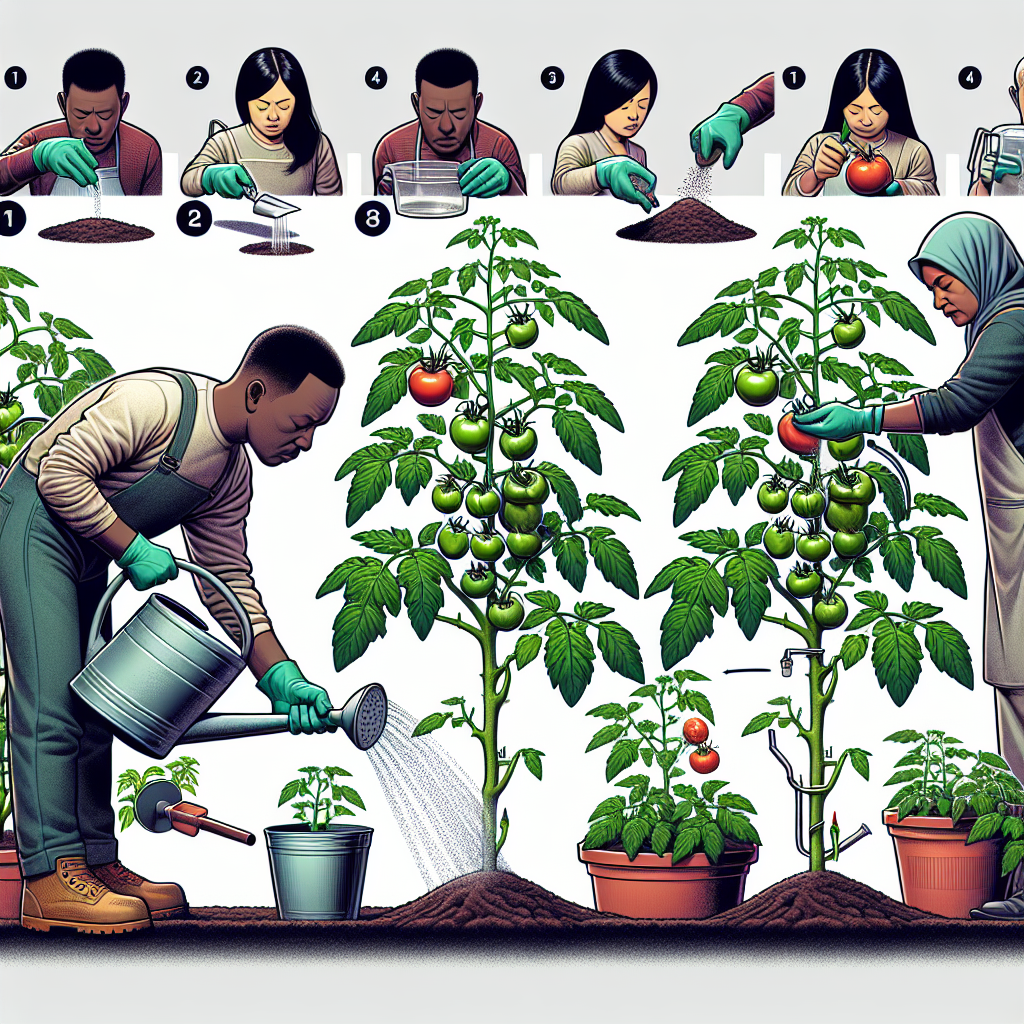
How to add fertilizer to tomato plants
The Essential Guide to Adding Fertilizer to Tomato Plants
Growing healthy tomato plants requires more than just planting seeds and watering them. One of the critical aspects of successful tomato cultivation is providing the right nutrients through fertilizers. This article will delve into how to add fertilizer to tomato plants effectively while ensuring that your tomatoes thrive throughout their growing season.
Understanding the Nutritional Needs of Tomato Plants
Tomato plants, like all plants, require a balanced supply of nutrients to grow and produce fruit. The primary nutrients essential for tomatoes include:
- Nitrogen (N) - Crucial for plant growth, foliage development, and overall health.
- Phosphorus (P) - Important for root development and flowering.
- Potassium (K) - Aids in fruit quality and disease resistance.
In addition to these macronutrients, tomatoes also benefit from a variety of micronutrients such as calcium, magnesium, and sulfur. Understanding these needs will help you choose the right fertilizer and application method.
Types of Fertilizers for Tomato Plants
When choosing fertilizer for your tomato plants, you can select from various types, each with its benefits:
- Organic fertilizers - These include compost, manure, and fish emulsions. They enrich the soil slowly and improve soil health over time.
- Chemical fertilizers - These synthetic fertilizers provide nutrients quickly, which can result in faster plant growth. They are available in granular or liquid form.
- Slow-release fertilizers - These provide nutrients over a more extended period, reducing the need for frequent applications.
When to Fertilize Tomato Plants
Timing is critical when it comes to fertilizing tomato plants. Here's a simple guideline:
- **Pre-Planting**: Before planting, it’s advisable to work compost or a balanced slow-release fertilizer into the soil.
- **At Planting Time**: When transplanting your seedlings, add a starter fertilizer with higher phosphorus levels to promote root development.
- **During the Growing Season**: Fertilize every 4-6 weeks during the growing season, adjusting based on plant needs and soil conditions.
How to Add Fertilizer to Tomato Plants
Now that you've selected the right fertilizer and timing, let’s explore how to add fertilizer to tomato plants effectively:
Preparation and Safety Steps
Before you start applying fertilizer, consider these preparation steps:
- **Read the Label**: Understand the nutrient concentration and application rates from the product label.
- **Wear Gloves**: Protect your skin from potential irritants in chemical fertilizers.
- **Water the Plants**: Ensure that the soil is moist before applying fertilizer; dry soil can cause root burn.
Methods of Application
There are several methods for adding fertilizer to your tomato plants, each with its advantages:
- Broadcasting: Spread granular fertilizer evenly over the soil surface around the plants, avoiding direct contact with stems.
- Side-Dressing: After plants are established, apply granular fertilizer along the side of the plants and gently work it into the soil.
- Liquid Fertilizer: Mix liquid fertilizer with water and apply it directly to the soil around the base of the plants.
- Fertigation: For advanced gardeners, using a drip irrigation system that incorporates fertilizer allows for efficient nutrient delivery.
Signs of Nutrient Deficiency
It’s important to monitor your tomato plants for signs of nutrient deficiency. Common symptoms include:
- Yellowing Leaves: Indicates nitrogen deficiency.
- Purple Hues on Leaves: May suggest phosphorus deficiency.
- Blossom End Rot: Often due to calcium deficiency.
Adjusting Fertilizer Application According to Growth Stage
Depending on the growth stage of your tomatoes, you may need to adjust the fertilization strategy:
Seedling Stage
During the early stages, focus more on phosphorus to promote root development. Use a starter fertilizer high in phosphorus at planting time.
Vegetative Stage
As your plants grow, increase nitrogen intake to support healthy foliage. Side-dressing with a nitrogen-rich fertilizer will help during this stage.
Flowering and Fruiting Stage
When flowers begin to form, reduce nitrogen and increase phosphorus and potassium to encourage flower production and fruit quality.
Best Practices for Fertilizing Tomatoes
To ensure maximum effectiveness when adding fertilizer to your tomato plants, follow these best practices:
- Test Your Soil: Conduct a soil test to understand your soil's nutrient composition and pH. This will help tailor your fertilization plan.
- Avoid Over-Fertilization: More isn't always better. Excess fertilizer can lead to nutrient imbalances and stress for the plants.
- Keep Plants Hydrated: Always water plants after fertilizing to help dissolve and distribute the nutrients into the soil.
- Mulch: Use organic mulch to retain moisture, reduce weeds, and slowly add nutrients to the soil as it decomposes.
Conclusion
Successfully growing tomato plants requires an understanding of their nutritional needs and proper how to add fertilizer to tomato plants. By choosing the right type of fertilizer, applying it at the right times, and monitoring your plants' health, you can ensure a vibrant and productive tomato harvest. Happy gardening!
By Guest, Published on October 13th, 2024